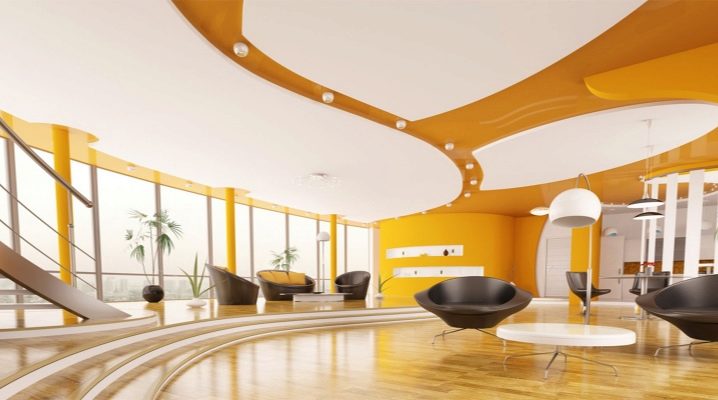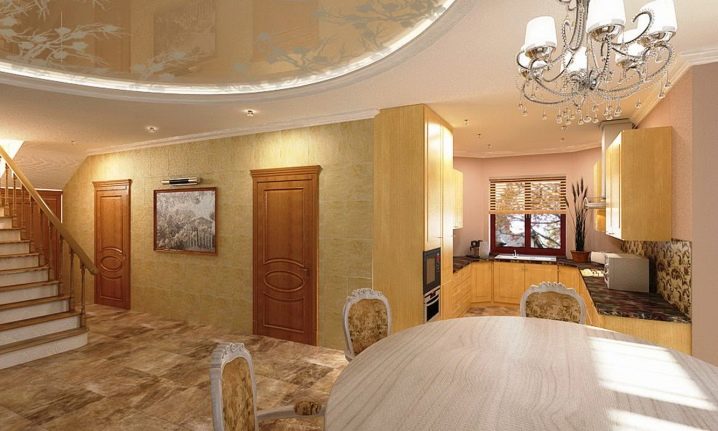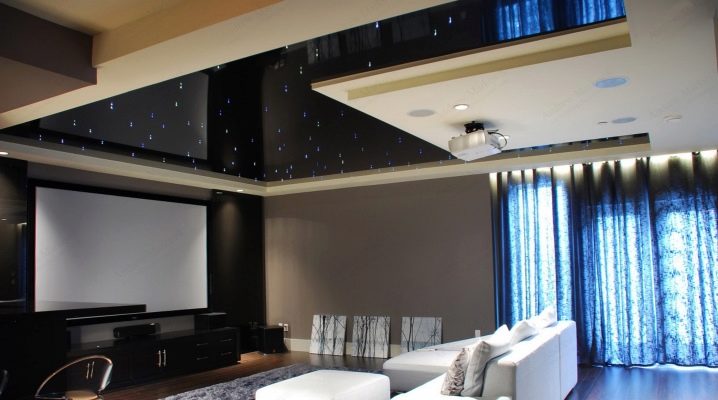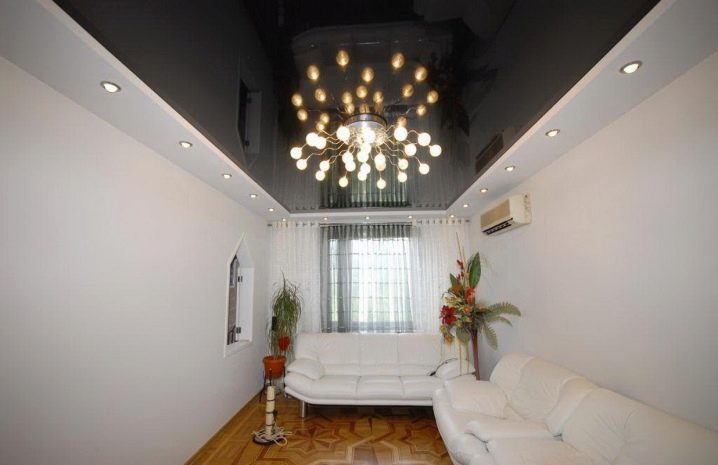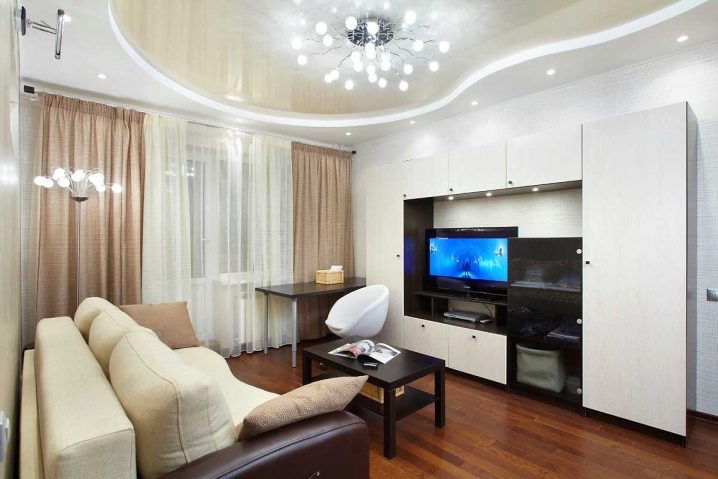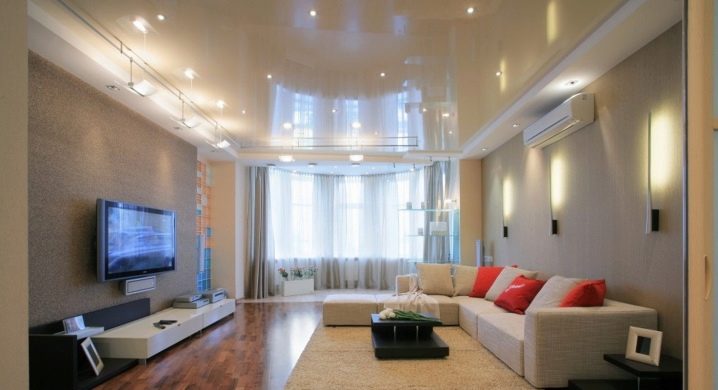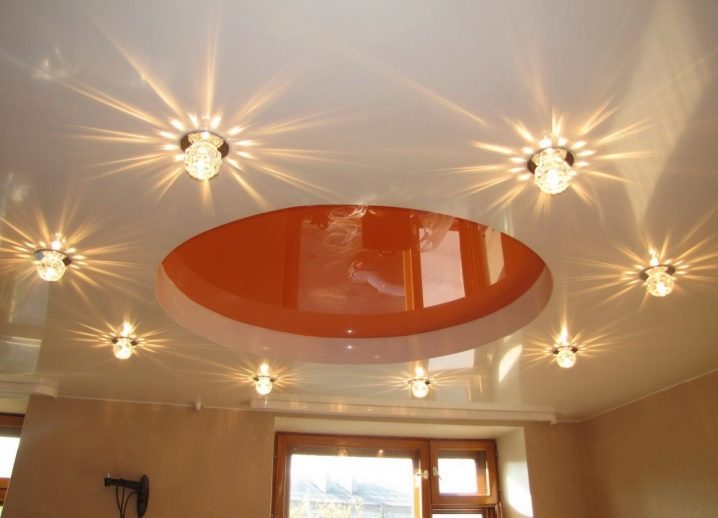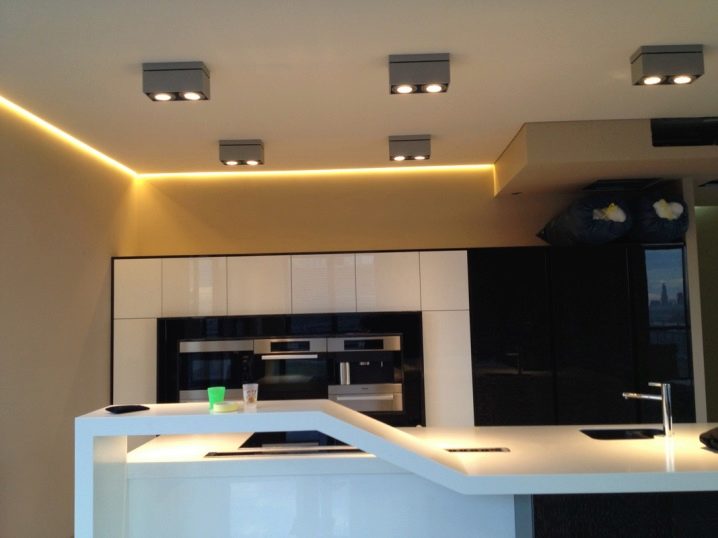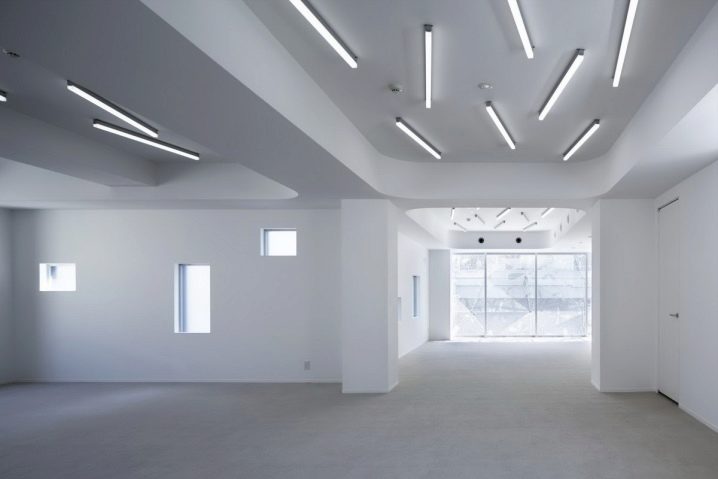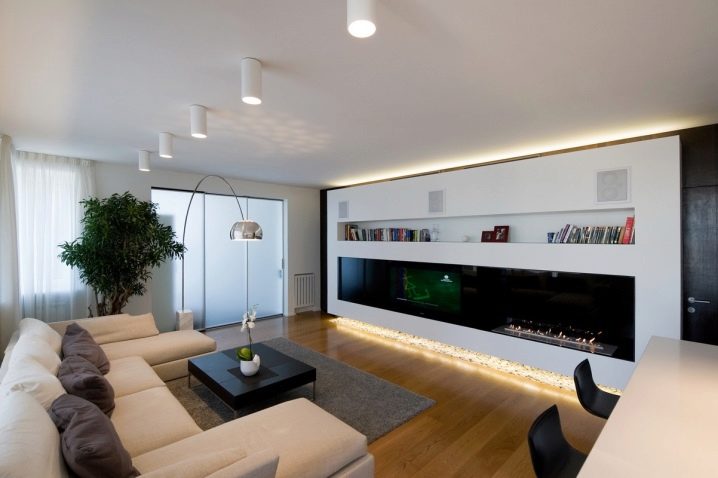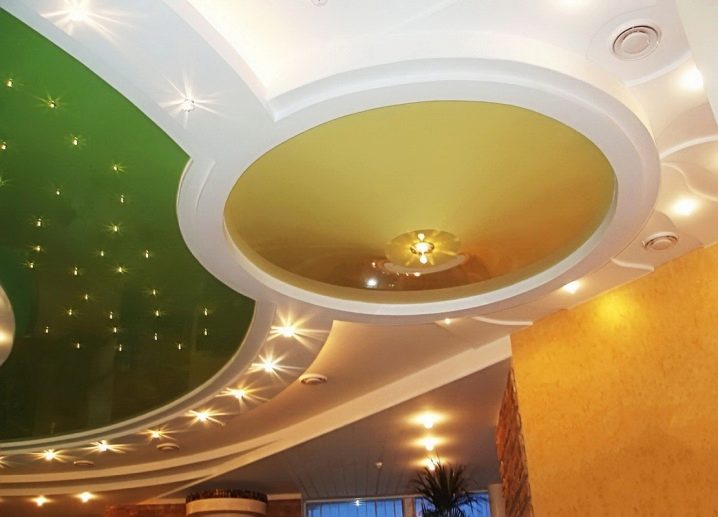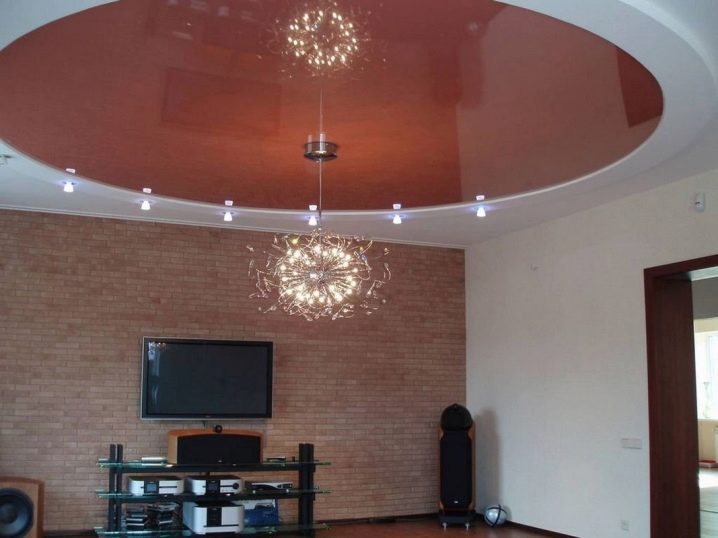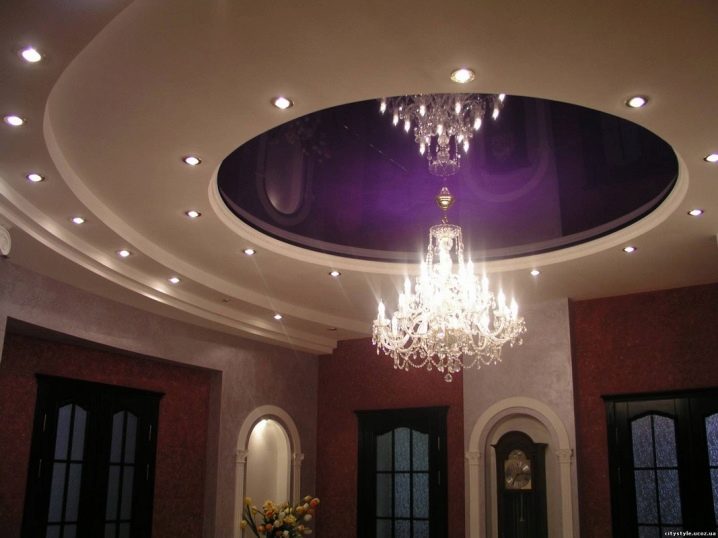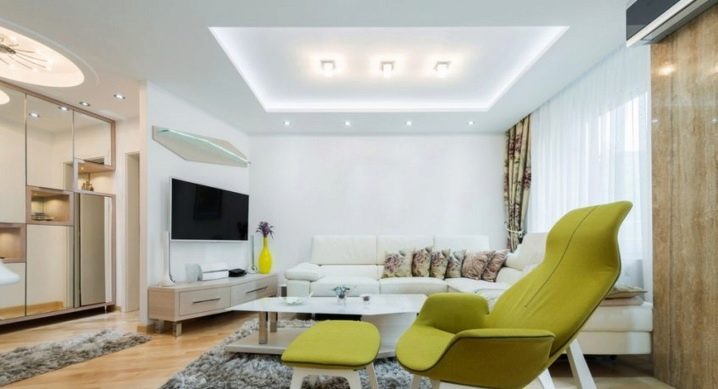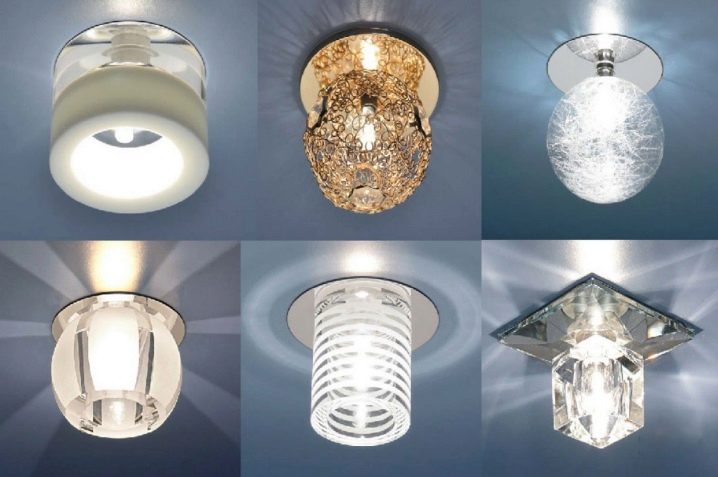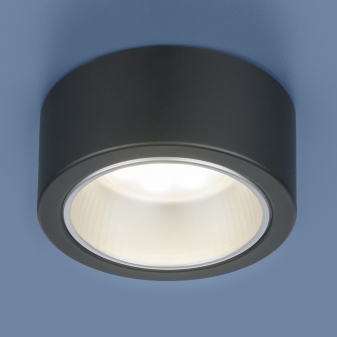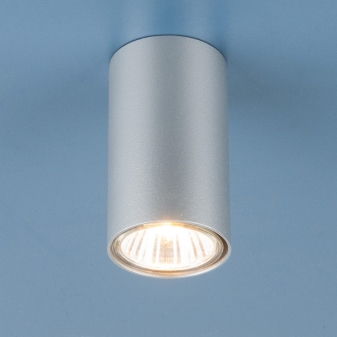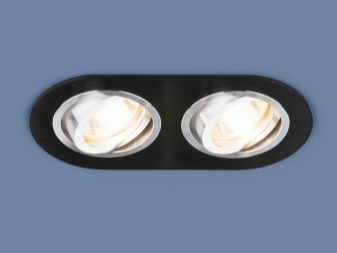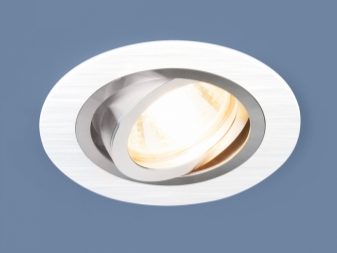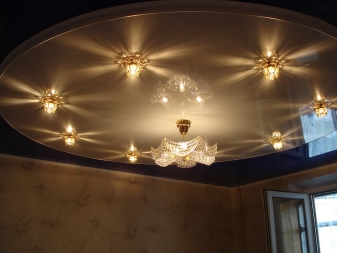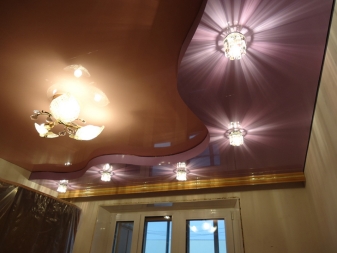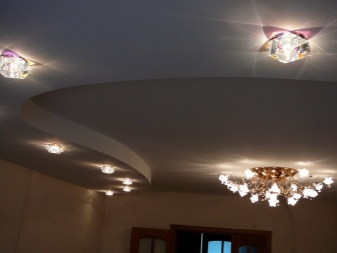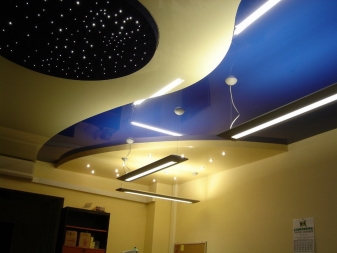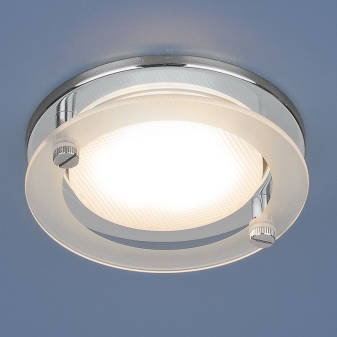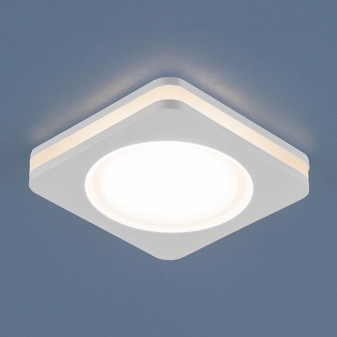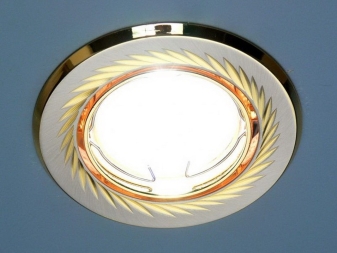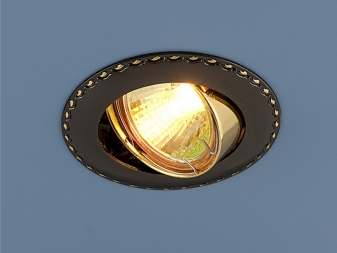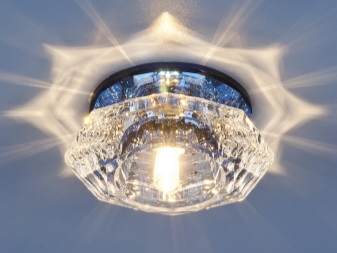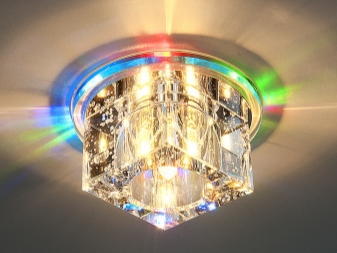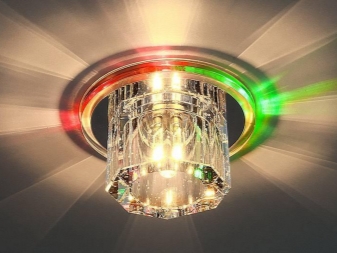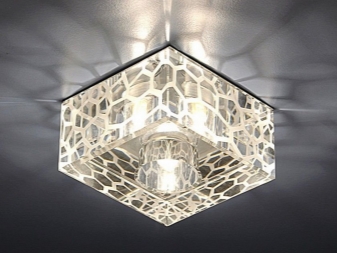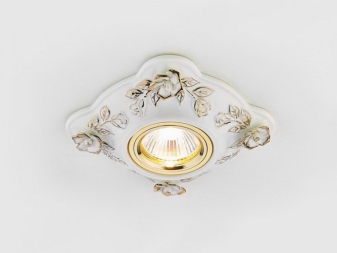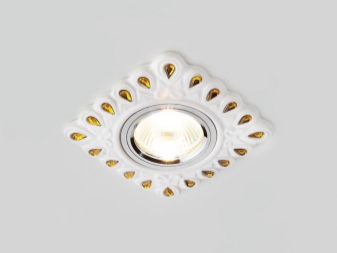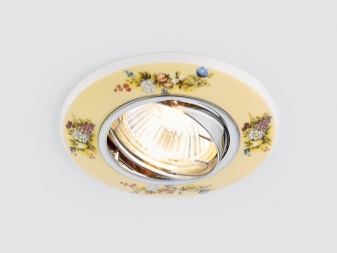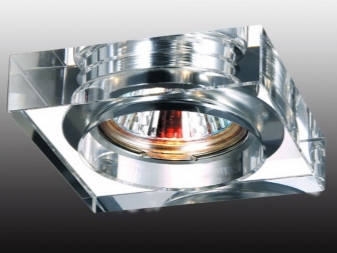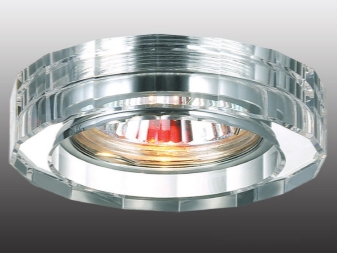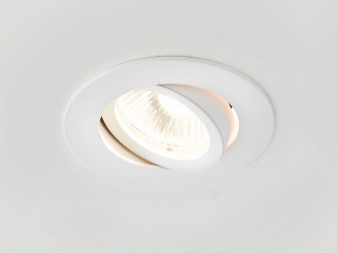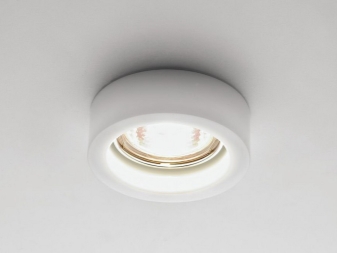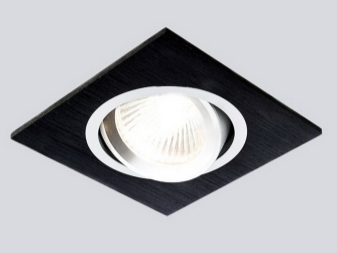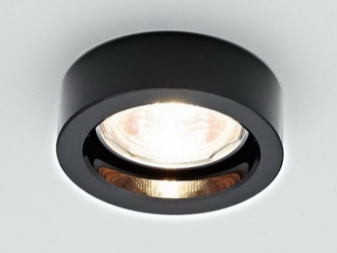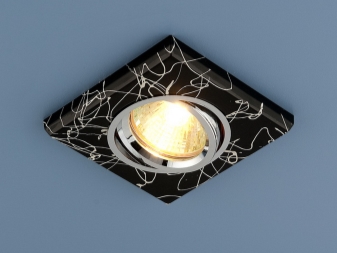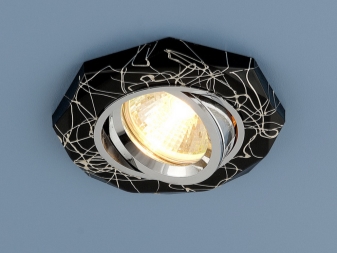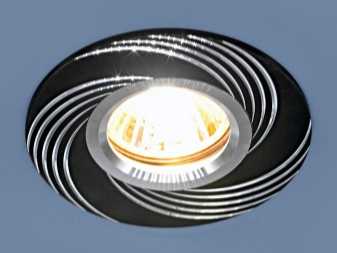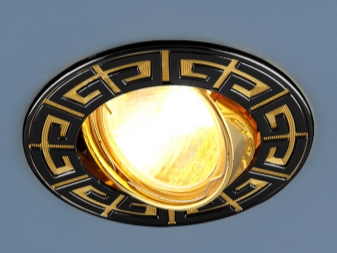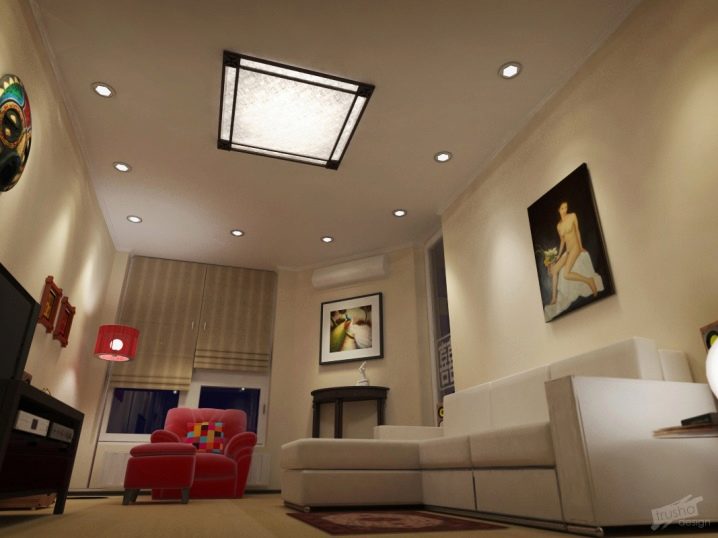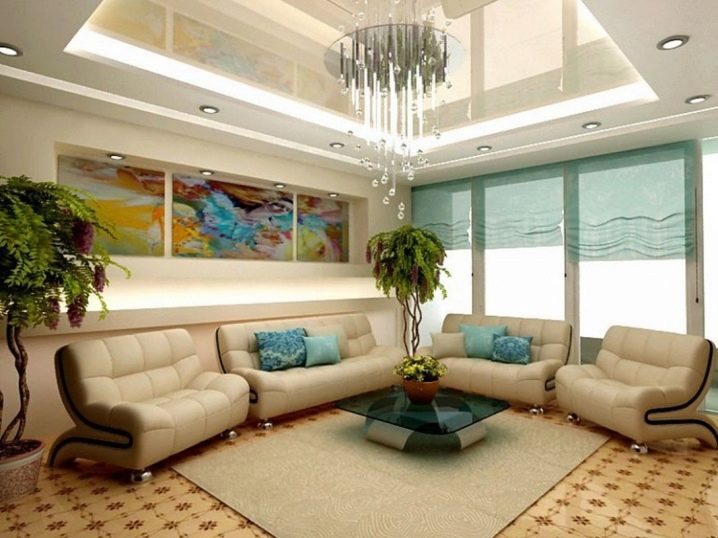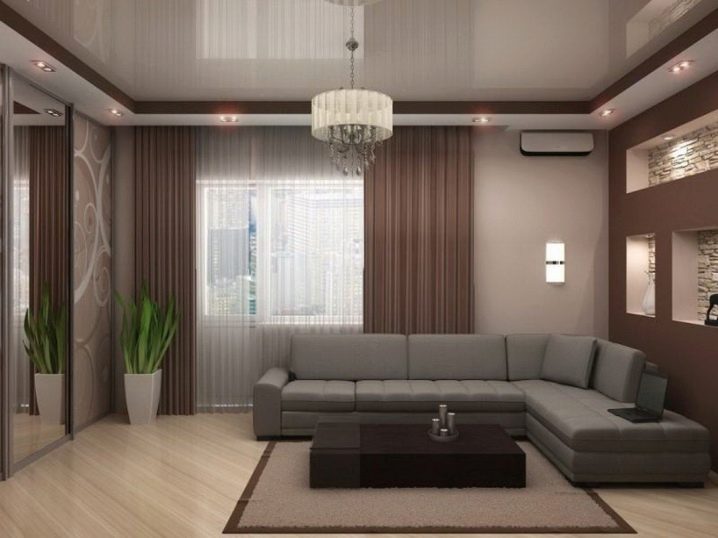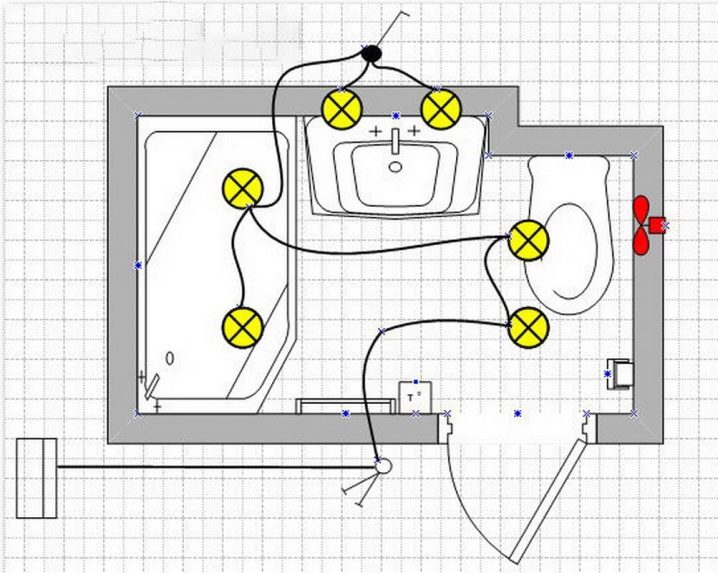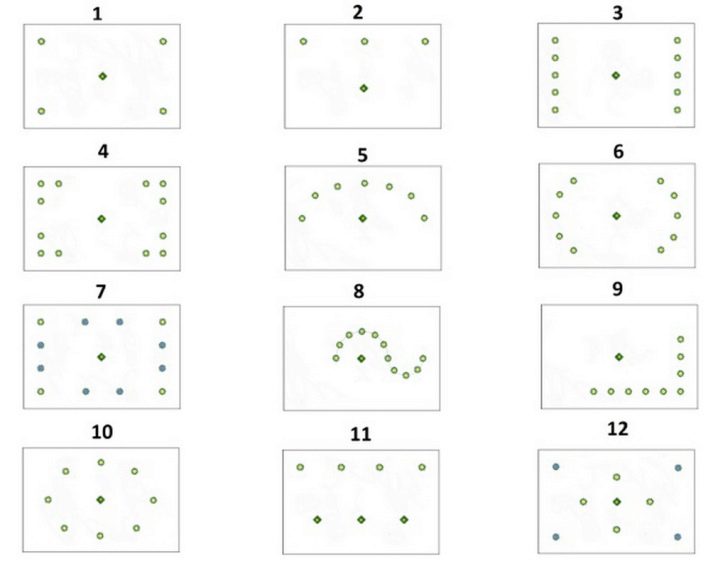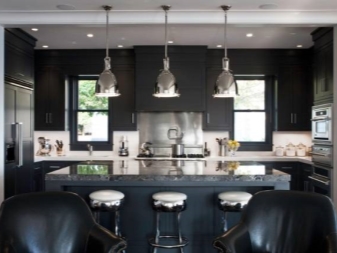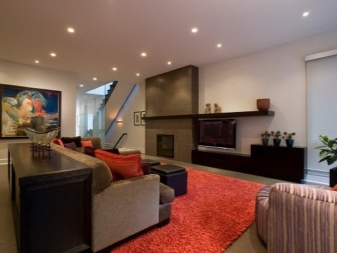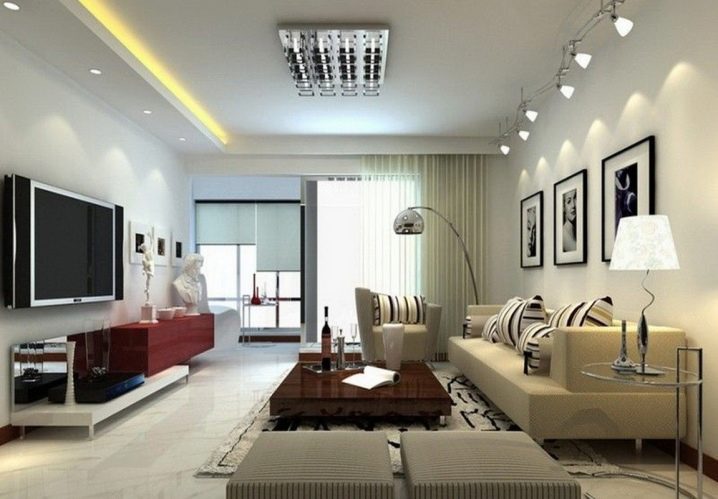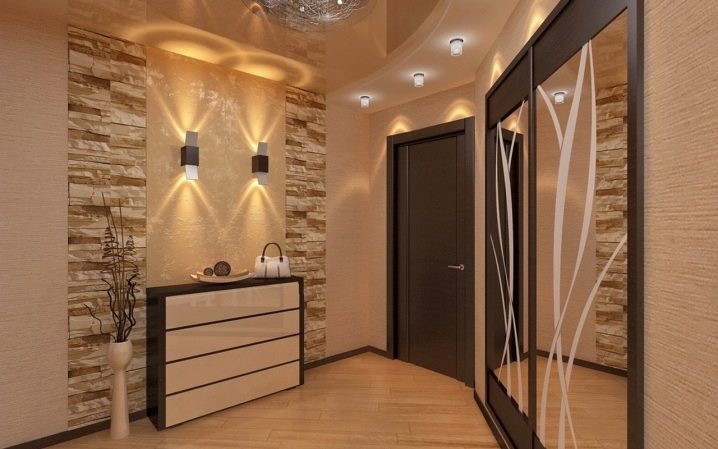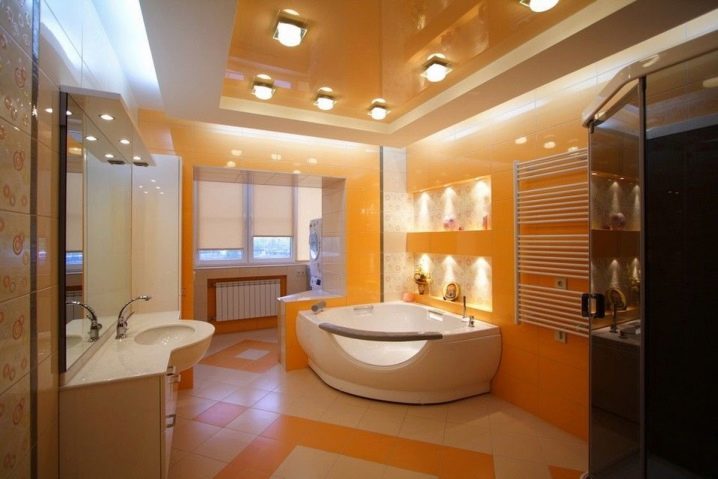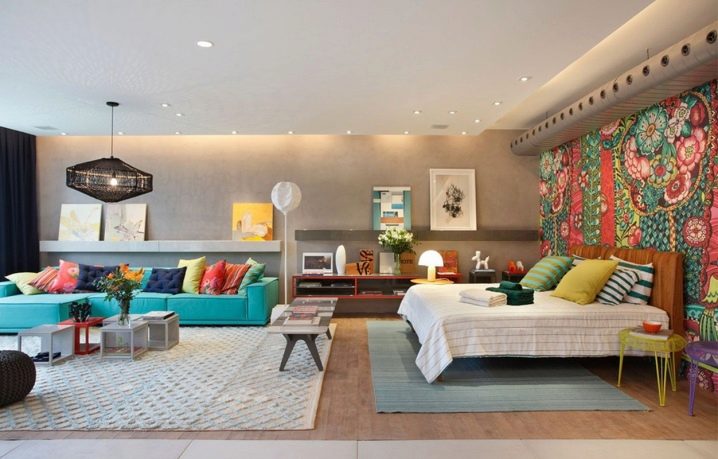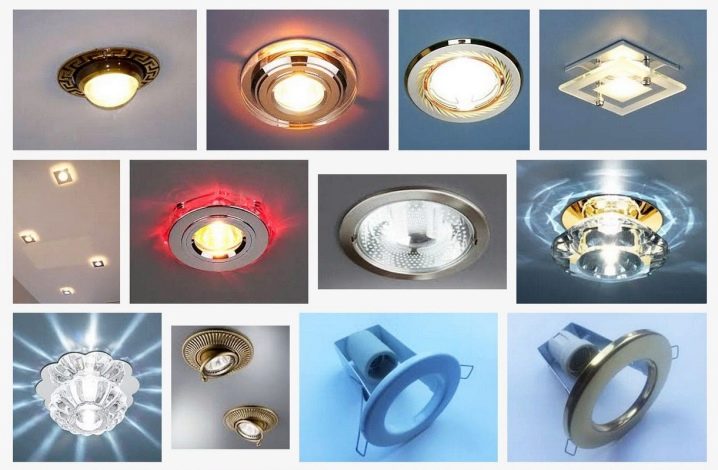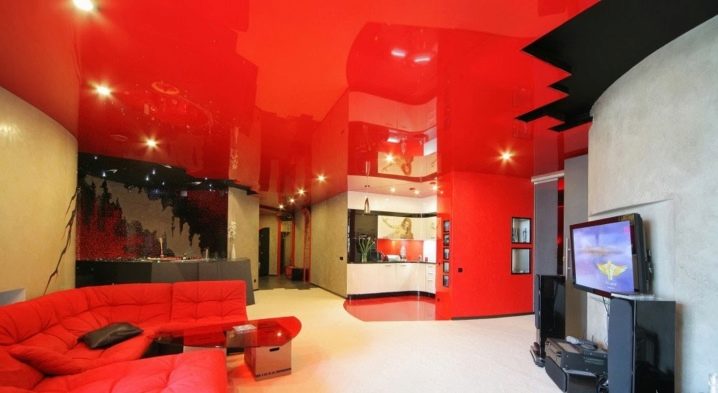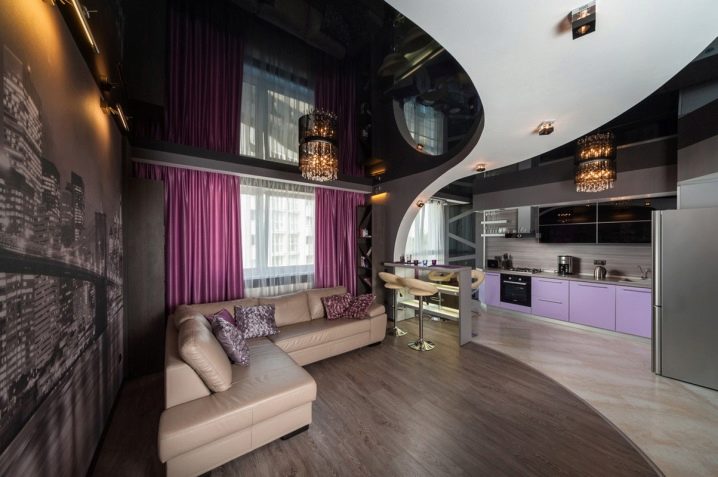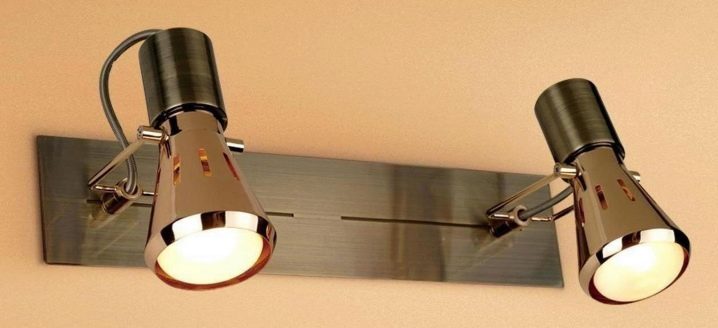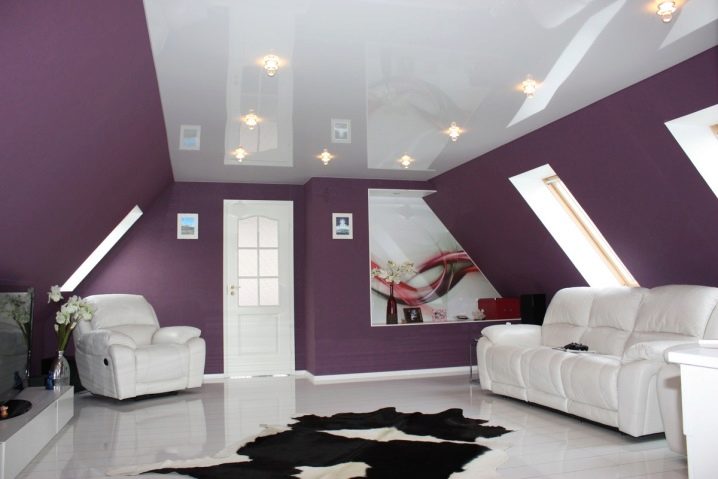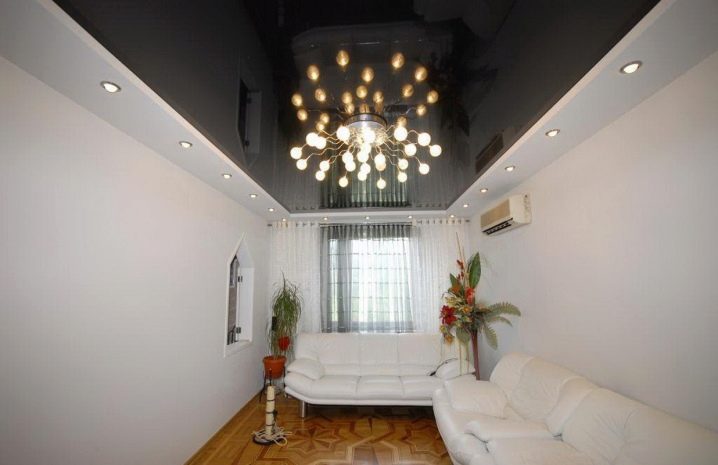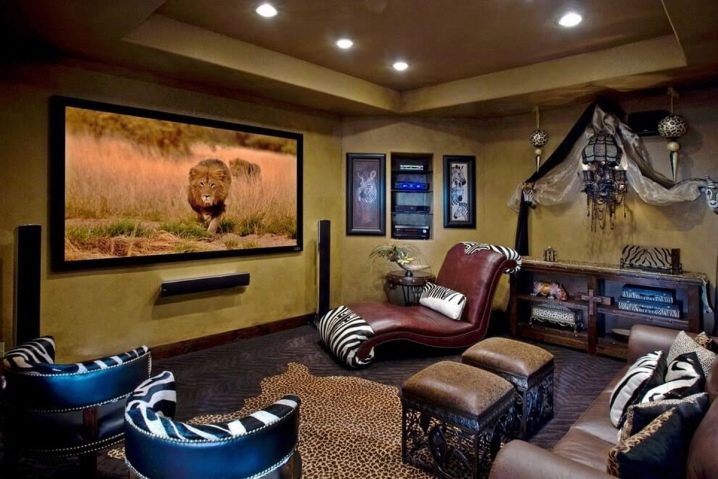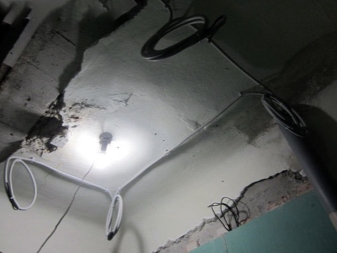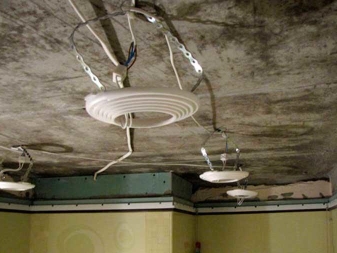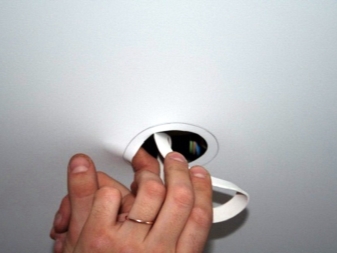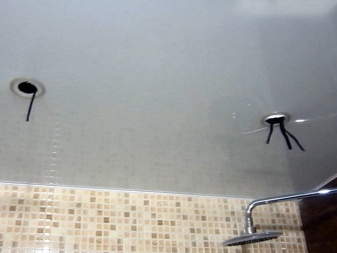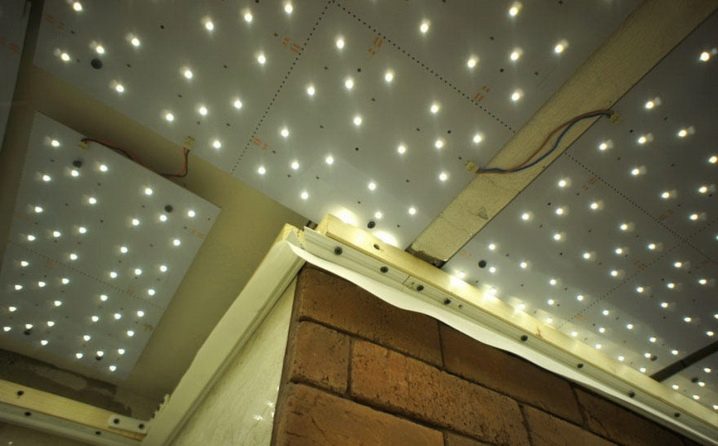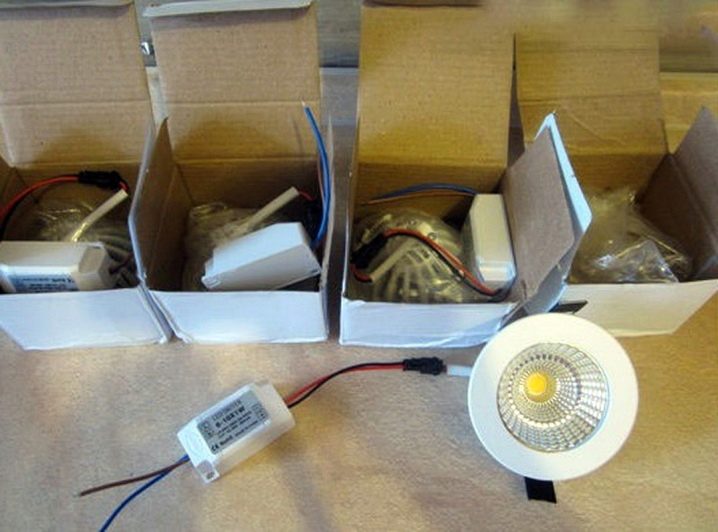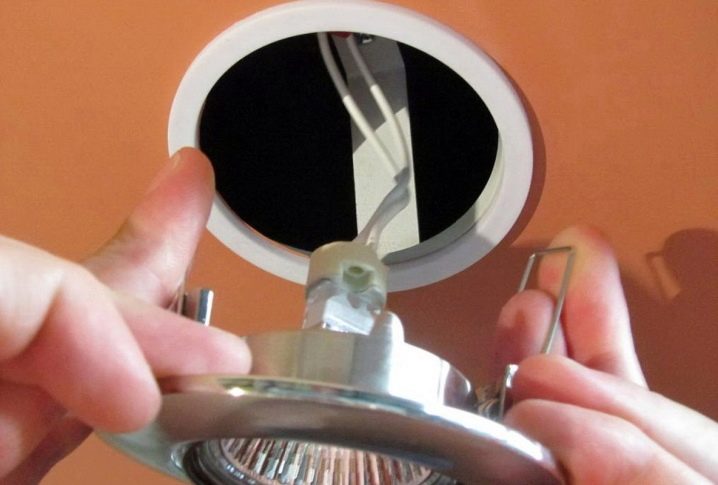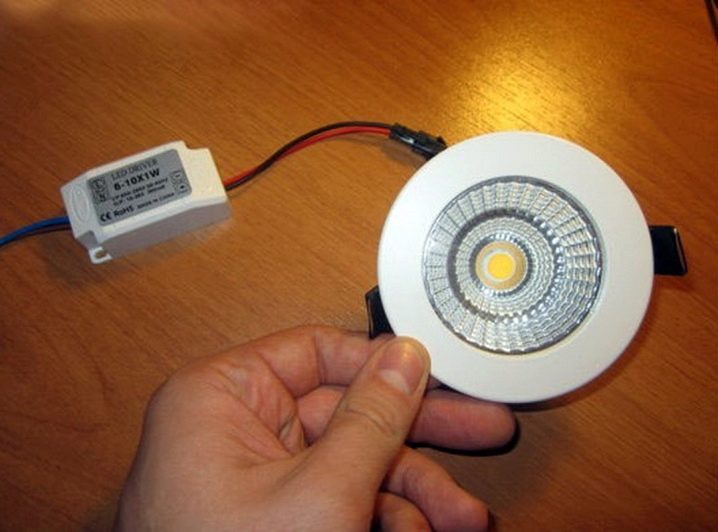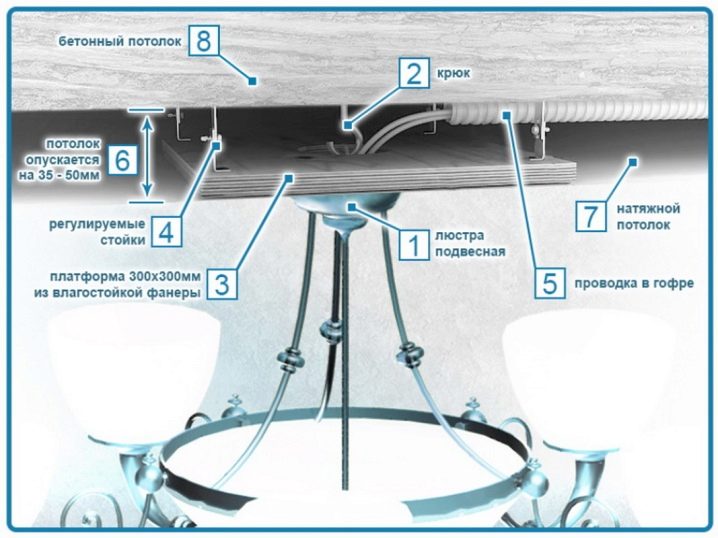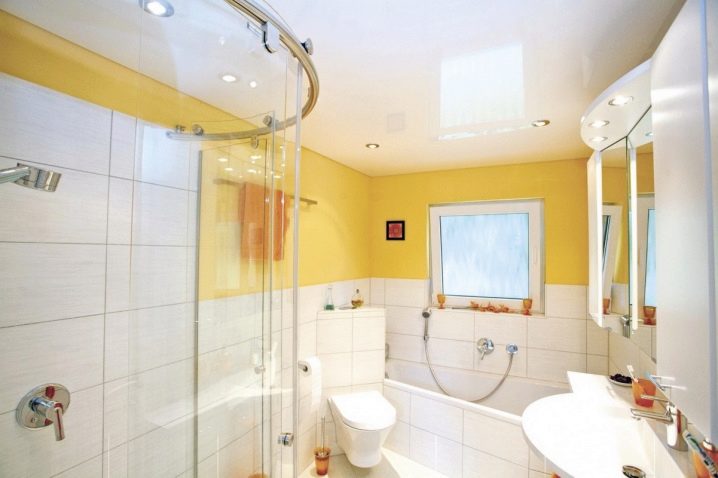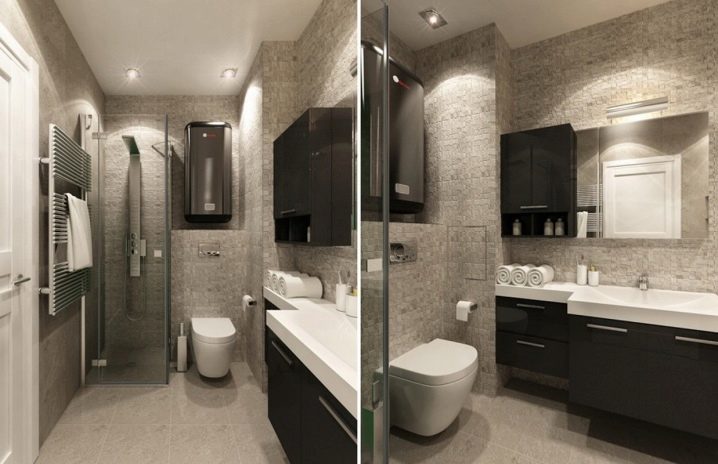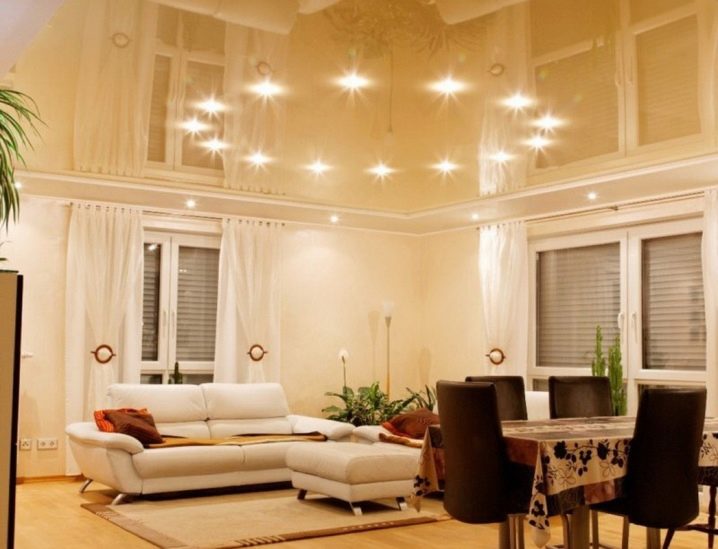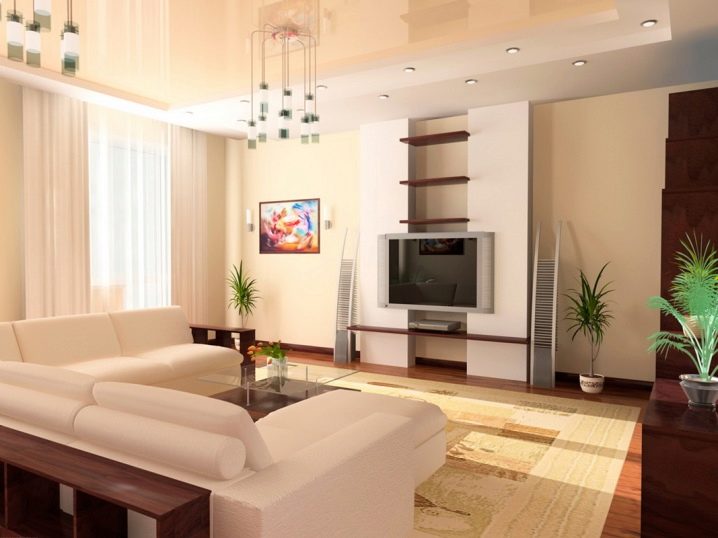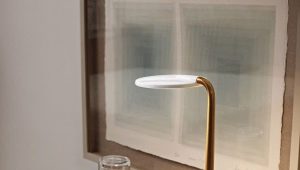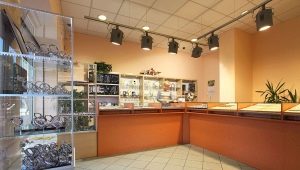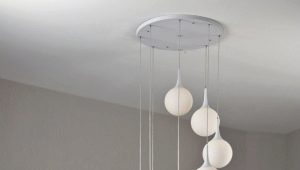Stretch ceiling spotlights
Choosing the right lighting for a stretch ceiling is just as important as pulling the canvas itself. Not only the durability of the PVC film directly depends on this, but also how the room will “play up”, whether the lamps will make it more beautiful or only spoil it. In cases when the chandelier cannot be installed or its light is not enough, spotlights come to the rescue.
Special features
Lighting of any room should be planned, and especially when installing a stretch ceiling. This is largely due to the fact that not all spotlights will cope with their role equally well. Some of them will heat and melt the web, another part may overheat and catch fire, the third will simply be too heavy or having too long fasteners.
The first and main difference of spot lighting for suspended ceilings is to opt for low wattage luminaires.Only such models will not cause problems and will not require dismantling of the entire tension fabric.
In second place - the need to install a basement in a fairly small space without ventilation. It just so happened that few of the owners of the premises agree to “give” 12–15 cm to the height of a room for the sake of several lamps, and it’s scary to imagine such low apartments in houses of Khrushchev’s construction.
The honorable third place is given to dimensions of future dot illumination. Due to the nature of the design in the tension film it is impossible to make holes larger than 15 cm in diameter. Accordingly, lamps or their fasteners must be less than the designated figure.
Thus, for successful installation of spot lighting, it is necessary to take into account the peculiarities of the stretch ceiling itself, as well as the requirements for luminaires. If at least one of these aspects is ignored, the risk of quickly losing the original look of the room after the renovation is great, and the prospect of almost immediately reworking the fresh renovation will not please anyone.
Kinds
For stretch ceiling can be used various types of lamps.Built-in lamps are available in different variations: LED, halogen, and in some cases even incandescent lamps. Each of these types has its own characteristics, which will be further disassembled depending on the category. It is necessary to make a reservation in advance that LED-lamps are the best choice today.
An interesting solution is fixtures installed in pairs. They are perfect for lighting rooms, if there is no possibility to install the lamps at the required distance from each other: the luminaires in the bundle are equipped with additional insulation preventing their overheating and interaction.
There are mounted spotlightsresembling the cylindrical details of some comic ship. They are located below the level of the tension canvas and stand out noticeably against its background. Such models are used to emphasize any part of the room.
There are and false models. They come in various configurations and are available in a variety of sizes. The choice of materials is also quite large. Such designs as well as mounted "give" a maximum of light, but they perform a more decorative role and carry an aesthetic load.
Embedded models are used most often.The choice of forms and materials for them is limited only by a small list of possible combinations, and installation takes a lot of time and effort even from experienced contractors. A huge plus is their invisibility against the general background, thanks to which chandeliers are often complemented by the built-in spotlight.
Dimensions
As mentioned above, the size of the spotlights is limited to 15 centimeters in diameter, the canvas of the stretch ceiling is simply not designed for large lamp sizes. It is worth noting that large lamps are used extremely rarely. Firstly, they do not suit the style of far from all premises. Secondly, their functionality is often limited by the meager scatter of design ideas.
Traditionally, models are selected whose diameter rarely exceeds 80 mm. This is due to the fact that such models have high luminous efficiency, are relatively easy to install, imply the installation of lamps of low power and open up a wide scope for experiments with the design.
The width of the spotlight depends on the selected light bulb. Thus, ordinary incandescent bulbs require at least 120 mm gap between the capital ceiling and the web for installation.For lamp minion - 90-100 mm. Of course, for rooms with low ceilings, a couple of the above lighting options are not considered: 12 cm is a serious distance, even for high rooms.
For halogen lamps, the numbers are significantly lower - about 60 mm. Despite the relatively small figure, few people are ready to “lower” the ceiling by 6 cm.
The most advantageous option are LED lamps, the amendment for the installation of which starts from 35 mm. Sometimes this is a smaller distance than is required to install the profiles on which the ceiling is fastened. Due to this feature, many consumers order the installation of LED-lamps, despite their high cost.
Forms
The shape of the lamp depends not only on the preferences of the owners of the house, but on the characteristics of its mounting. Most models are available. in the standard round configuration, but may be square, multifaceted, curly options.
Built-in lights can only be round. Such restrictions are imposed for security reasons: PVC ceiling film can easily be “dispersed” at the corner of the lamp. Nevertheless, the market offers a huge selection of cases of various designs and even with decorations (for example, a “rain” of crystal drops).
More space for maneuver open overhead lights. They can be of various forms, as in this case there is no direct relationship between the configuration of the lamp itself and its fastener. It should be noted that the fastener is still presented in the form of a ring, but the large size of the lamp body easily covers the entire “stuffing” that does not harmonize with it.
Some spotlights are equipped with a mini-canopy covering the surface of the light bulb. The ceiling itself resembles a hemisphere with different coatings, both smooth and faceted. There are also square mini-ceiling lamps, repeating the shape of the body, but on a smaller scale.
A variety of forms of lamps allows you to choose a model for every taste to a variety of interiors, not only modern, but also classical. If you supplement the figured lamp body with an ornament, you can create a semblance of a small work of art. A coating with an embossed pattern, with the illusion of cracking, or simply with a multitude of faces, refracts the light, creating unusual lighting in the room, thereby changing the whole atmosphere of the situation.
Materials
Different materials for the manufacture of body and decorative elements.
Most often, the body do from heat-resistant plastic. It is quite light and allows you to easily install lamps of low power. A large selection of colors and textures add popularity to the material.
A more expensive alternative is metal. It is also interesting, but the metal conducts a good current, which means that you need to make sure that the wiring is completely isolated so that if something happens, you do not get an electric shock.
Lamps only from glass used as overhead models. They pass light well, allowing you to light up the area as much as possible. These options are expensive because they use tempered glass. Some manufacturers offer impact-resistant options so that when the lamp falls it can survive and the user does not have to buy a new one.
Ceramic and plaster Products are extremely rare, but such options also exist. They are not widely accepted due to their high brittleness and low performance properties. Moreover, these options are hard enough to enter into the interior due to the specific material.
Various decorative details are used as elements for decoration: crystal pendants, crystals, stained glass, wooden inserts - in short, everything that will help the lamps to look harmoniously in the interior.
Colors
The choice of colors is quite large. Both metallic coatings and pure colors and texture patterns are used.
The most popular transparent lights. They transmit light well, and in the off state they look like crystals on the ceiling. Many buyers are impressed by a similar effect, which is why such models have won universal love.
White color it is used mainly for built-in lighting, as it allows making the lamp as inconspicuous as possible against the background of a stretch ceiling, traditionally also white. When you turn on such lamps it seems that the flow of light pours directly from the ceiling itself.
Black models It is appropriate to look if it is necessary to focus on the ceiling surface, for example, when using plasterboard intricate designs. Black lamps are hard enough to pick up to the white ceiling, as they can stand out inappropriate contrast on its background.
As an alternative, metal coatings can be proposed: gilding, bronze, silver, copper. Such models will look no less interesting, but much more harmonious.
Drawings on lamps - relatively new trend in fashion. A drawing can be any one, ranging from stylization to marble and ending with passages from world masterpieces of artistic art (of course, only partial ones). The latter are made to order with the help of special devices, rarely painted by hand. It is popular to use Greek ornaments, as well as imitations of cracked stones with shiny gold or silver streaks.
Power
Depending on the type of lamp chosen, the power allowed for use on the surface of the stretch ceiling also varies. Remarkably, the largest lamps have the maximum allowed power.
For incandescent frosted glass lamps the maximum permitted power is 60 watts. Incandescent lamps are practically not used for suspended ceilings, since the consumption of electricity for their power supply is too high. The average lifespan of a tungsten model of this capacity is about 1000 hours, which is not at all impressive against the background of the other alternatives.
Power of energy-saving lamps should not exceed 45 watts. Twisted energy-saving elements are used on a par with LED. They absorb little electricity, but these samples need some time to flare up in full force.
Halogen lamps should not be more powerful than 30 watts. They heat up easily and can melt the web. Please note that the installation of such models can not be done with bare hands, be sure to use gloves, but in excuse it is worth noting that halogen samples will have to be changed infrequently. Their service life is about 3000 hours. An additional feature is the inability to regulate the heat of illumination, halogen lamps have a fixed spiral temperature of 3000 K.
The best recognized LED samples. The required power is at 40 watts. The advantages are that the LED options practically do not heat up, last longer than all the listed alternatives (on average, up to 30,000 hours), and also have different light temperatures: from cold white at 8000 K to warm yellowish 2700 K.
Location
The luminaires location plan must be drawn up even before the ceiling covering is installed, since it will be necessary to place the wiring and their housings first.A good solution is to pre-allocate space for lamps on a regular sheet in a cell, and then transfer the markup directly to the ceiling using scaling.
Both the dotty lamps, which are chaotically located, and symmetric, arranged in a semicircle or in two parallel lines, look beautiful. Many designers build the layout of the relative main ceiling lamp - chandeliers. This approach is fully justified, but not necessary, spotlights may well exist on their own.
Depending on the number of fixtures, the possible variants of their placement also vary. The arrangement of lamps of different power depending on the highlighted area is a classic of the genre. You can use two schemes, as if superimposed one on another: for brighter and less bright lamps.
A good idea is to arrange the LEDs around the perimeter of the room. The distance between them should not exceed 1 m, and to the nearest wall - not less than 60 cm.
Group placement will help to put emphasis on a specific area, and even distribution throughout the room will create diffused light.Correctly calculate the required number of fixtures. Experts note that it is necessary to proceed from the need to use 1 lamp for 1.5 square meters. square meter. For example, for a room of 12 square meters. m will need 8 fixtures.
For different rooms
Depending on the special room should be placed differently spot lights. It will help to adjust the proportions and make the room more harmonious.
In the bedroom It is best to use the most simple layout design, emphasizing unusual details, for example, place the lamps along the wall above the headboard. In this case, they will serve as reading lamps.
For anteroom, corridor and any rectangular room is one and the same task: to visually expand the room. In this case, the focus is best to transfer to the side of the room, placing the intense illumination along the walls, and leave the central part dark. In addition, it will add ceiling ceilings.
In the bathroom increased demands are placed on the luminaires themselves, their IP index should be equal to 67, which means that they are completely waterproof.For a room with high humidity and the risk of water on the lighting device, this item is extremely important.
In the living room point illumination should be installed not only depending on the required degree of illumination, but also in order to highlight a particular functional area. The hall welcomes guests, so it is necessary to highlight the area with sofas, and also pay attention to the most elegant elements of decor: paintings, figurines, photographs.
In the nursery, especially in the small, it is important to highlight every corner. The use of multi-colored point lamps, which can paint a child's room in all the colors of the rainbow, is welcomed.
Which is better?
When choosing a luminaire for suspended ceilings, pay attention to its brand. Sometimes you do not want to overpay for the brand, but remember that in the case of buying low-quality light bulbs, you may have to replace the entire ceiling.
The best choice for today recognized LED lamps. They do not require leaving a lot of space under the basement between the ceiling and the tension film, they do not heat up during operation, are distinguished by remarkable durability and have a wide range of different light temperatures and colors.The only significant disadvantage is the high cost of such options, but in the long run, saving on frequent replacement and electrical energy their price does not seem so outstanding.
The choice of lamp design depends on the goals you are pursuing. Perhaps it is only necessary to add illumination to a dark room, decorate the ceiling or divide the room into functional areas - as you can see, there are lots of options.
In the first case, built-in models are perfect for the role of the lighting element. Such illumination will not attract undue attention to itself, and the room will become noticeably more lively.
If you want to highlight a single item or area, you can use spotlights. They are both embedded and overhead. Their difference from standard lamps is the ability to turn in different directions, fixing the luminous flux fixedly.
How to choose?
The choice of lamps depends on many factors, including the ceiling coverage and the number of levels. A single-level ceiling will be an excellent background for spotlights of any configuration, but only built-in models are suitable for multi-level structures.
A simple lamp will look too boring on a matte ceiling, but glossy PVC will sparkle with new colors. Matt should be emphasized with unusual overhead crystal models or embedded with an interesting decor. It is necessary to take into account the depth of planting of each of the possible models, since it varies greatly depending on the type of light bulbs. Recall that for ordinary incandescent bulbs the parameter is optimal from 120 mm, for minions - 100 mm, for energy saving and halogen lamps - 60-70 mm, for LED lamps - not more than 50 mm.
If you choose an invoice model with a picture, you should pay attention to the harmonious combination of the overall decor and ornament on the lamp. For example, if a room is decorated in an African style, it would be logical to pick up lamps “for zebra” or in the same colors in which the room is decorated, for example, brown. When choosing, push off your own feelings: if you like the option, you should seriously consider buying.
Pay particular attention to the material from which the lamp is made, and the quality of its work. If the model has sharp bumps and rough edges, it is best to refuse this purchase,since the luminaire can scratch or even tear the ceiling during installation. Never save on quality, because you do not choose models for a month.
How to insert?
Installation of the turned lamp to the stretch ceiling is a rather laborious task and requires a certain amount of experience and knowledge. Not every professional in his field will agree to hang point light bulbs, what can we say about amateur craftsmen. Connecting the wiring is not particularly difficult, all the subtlety lies in working directly with the canvas.
Before you hang the ceiling, it is imperative to mark the position of the lamps, draw wires to them and fix the frames. Next, you need to mount the tensioning sheet itself. Having determined the places where the stands for the lamps are installed, it is necessary to isolate these places on the ceiling using tread rings and carefully cut the holes without damaging the tread rings themselves. Next you need to fix the lamp itself and insert the light bulb.
In words this seems simple enough, but in practice everything turns out to be quite different. A single mistake will cost a lot: you will have to buy a new canvas for a stretch ceiling and redo work first.
We strongly recommend that you do not engage in amateur activities and go to a specialized salon; there you will also be accurately and quickly hung with a spotlight and a ceiling. This should be done also from economic considerations: in which case, the firm will be responsible for the damaged ceiling, and not you; accordingly, all the costs of replacement will fall on her shoulders.
How to change?
To change the ceiling spotlights, you must do the following:
- To begin, de-energize the luminaires. It is not necessary to completely turn off the electricity, it is enough to turn off the lamps themselves using a switch.
- Carefully unscrew the bulb from the cartridge. 2-3 scrolls are usually enough to make the design fall out freely.
- Screw the new light bulbwithout twisting it too tightly and trying not to rest your palms on the surface of the stretch ceiling. Otherwise it is fraught with coating breaks. If you twist the lamp too tightly, you will need to apply as much force to unscrew it. The result may be the same damage to the tension fabric.
- Turn on the light and check the operation of the light bulb.
By analogy with conventional static bulbs, spots are also replaced, but in this case the place of fixing the bulb should be held by hand.
If you want to completely change the lamp, we advise you to contact a professional. The best choice would be to buy the exact same model, but a different color. In this case, it will not require complicated work on dismantling the product, it will only be necessary to replace the lamp body.
If you decide to use a different type of light bulb, carefully read the instructions for your model. Sometimes it happens that the lamp works with only one type, for example, only with LED lights. Experiments in this case will not lead to anything good, but only to damage the model at best and to a short circuit in the more likely.
Options in the interior
For the bathroom an excellent choice would be the placement of lamps around the perimeter of the entire room. This scheme allows you to completely abandon the installation of the chandelier, since a sufficient level of lighting is created. Symmetrical arrangement looks quite harmonious, because it fully corresponds to the style concept of the bathroom.
Spotlights above the mirror allow you to create the necessary additional lighting in this area when it is needed. Using different switches for the main light and spot lighting is very convenient, it allows you to adjust the degree of illumination of the space to your liking.
In this example, it is clearly demonstrated how you can make a spotlight without being tied to the location of the main chandelier, as well as how to use different schemes for lamps of different luminous intensities. Brighter lights are arranged in a circle and highlight the living room area, and less bright ones around the entire perimeter.
The use of various lamps to create functional areas is a favorite method of many designers. Spotlights along the wall illuminate the shelves with various objects of art and TV, while helping to attract the attention of the viewer and highlight the merits of interesting things.
It is not always necessary to use a lot of light to create a comfortable atmosphere. Sometimes hidden lamps in niches cope with the task no worse. Small open point diodes are needed only to separate the space, to separate one functional area from another.
For information on which lamps are best for a stretch ceiling, see the following video.
